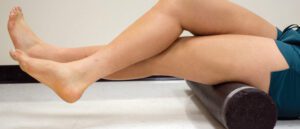24 Sep 2018 Answering health-related questions
by Karl Lenser
 I have received quite a few questions from 501 LIFE readers and will share a few of them with you. Please feel free to email me if you have any fitness/wellness questions.
I have received quite a few questions from 501 LIFE readers and will share a few of them with you. Please feel free to email me if you have any fitness/wellness questions.
Q:
I have been trying to get my abdominal area firmed up, but can’t seem to get any results. The spare tire does not want to go away! I have been sticking with old-fashioned crunches. Any suggestions?
A:
There are two important factors to consider whenever one wishes to get a six-pack, and they include genetics and the “spot reducing rule.” Genetics is one factor in this equation that you can’t control, but you can control your physical activity levels and how you exercise.
Let me explain what the “spot reducing” principle entails. What this means is that you can’t target a certain muscle group and expect the excess fat to melt away by conducting a series of exercises that focus on that muscle group.
In your case, performing hundreds of crunches on a daily basis will certainly firm up the abdominal muscles, but they won’t do much, if anything, for the fat tissue that is lying over the muscles. To reduce the fat tissue and for improving overall health and fitness, you need to incorporate an exercise program that combines cardio and strength training.
Walking, jogging, cycling, swimming, rowing, elliptical machine workouts and dance-oriented group classes are excellent calorie-burning activities, while strength training exercises that utilize machines or free weights will improve your strength and give your metabolism a boost for many hours after the workout is finished.
Maintaining a consistent exercise program that includes both cardio and strength training will improve your overall fitness and help reduce your body fat percent. Your dietary intake is also an important part of this process, but that factor can be addressed in a future edition of 501 LIFE.
Q:
I am a member of a local fitness center and have noticed that some members (mostly runners) use a foam cylinder/roller after their workout is completed. What is the benefit of using the foam rollers? Do they work?
A:
My answer to your question is a definite YES! The usage of Self Myofascial Release (SMFR) has been gaining popularity over the past two decades. The origins of SMFR began in the early 90s when “massage sticks” began to develop and infiltrate the distance runner market to serve as a post-run or post-race treatment to reduce inflammation and muscle tightness.
College and professional teams jumped on the massage stick bandwagon, and then someone (I wish it was me) had an idea to create a firm Styrofoam cylinder and market it to fitness equipment vendors and sports teams. They now have become a standard piece of equipment in fitness centers and living rooms throughout the world.
Foam rolling or using a massage stick helps remove knots from muscles that develop during a vigorous workout or other stressful activities. They massage muscular tissue and help decrease micro adhesions that cause the knotting of muscles. A simple analogy is to think of these as meat tenderizers.
I have used foam rollers and a massage stick for the past 20 years and continue to make this part of my workout. Taking a few minutes before and/or after your workout to use a foam roller or massage stick makes a big difference in how your muscles recover and feel after a workout.
As I have aged, I have become a firm believer in incorporating foam rolling and stretching techniques into my daily workout. Aging muscles and tendons typically get tighter and less pliable as we age and the SMFR technique is a useful tool in promoting muscular efficiency and recovery.
- Moving and improving at any age - September 30, 2025
- Just add water - June 30, 2025
- Pickleball’s a big dill - September 29, 2024








